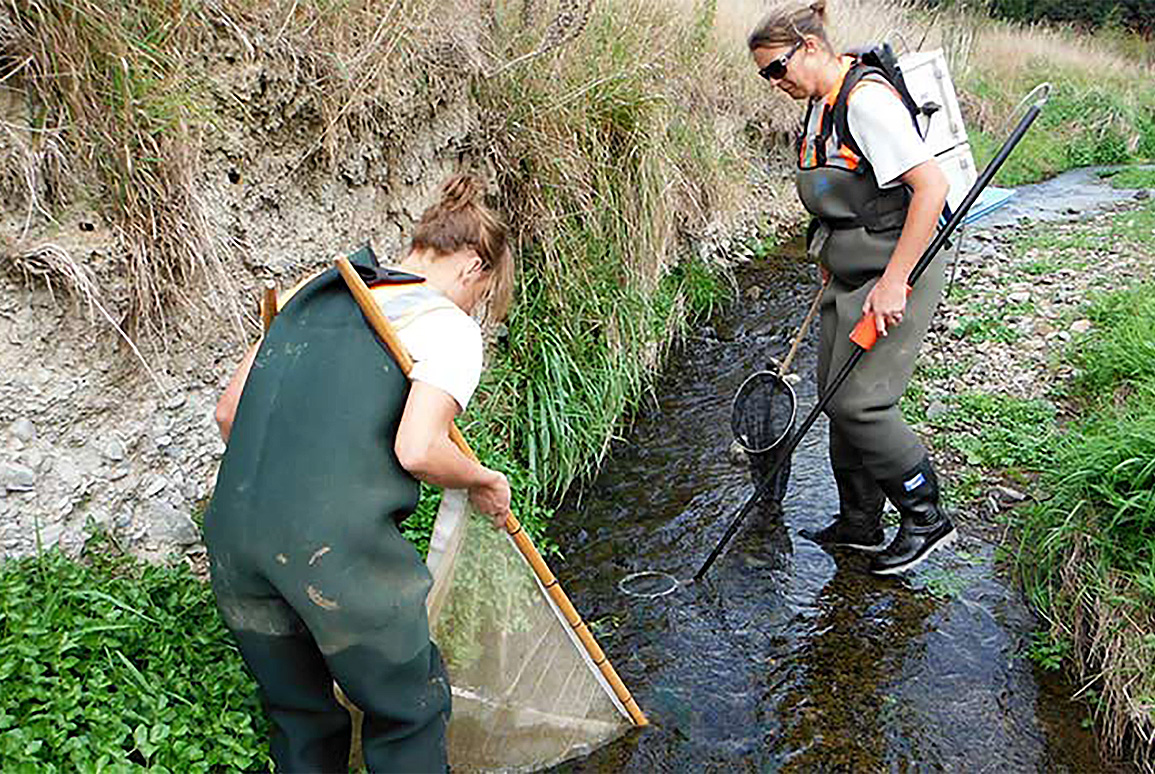Electric fishing: rescuing precious taonga
3 March 2017
Our waterways are a national treasure, and so too are the freshwater fishes that inhabit our rivers, lakes and streams.

The majority of our native fishes are threatened or at risk of extinction, which means a critically important part of Boffa Miskell’s work is understanding fish distributions through surveys and monitoring, and undertaking fish rescues. Using an electric fishing machine is a key tool that enables our ecologists to efficiently and effectively survey or catch freshwater fish without harming or killing the precious taonga.
Electric fishing is a technique used by our specially trained and certified ecologists. Two people are involved: a ‘fisher’ and a ‘catcher’. The fisher carries an electric fishing machine, mounted as a backpack. The machine generates an electric current that the fisher passes through the water using a hand-held ‘wand’. The current temporarily stuns nearby fish, interrupting their ability to swim away, so that they float in the water. The catcher positions a net downstream to capture the floating fish before they recover.
The captured fish are held for a short time in a bucket of stream water so they can be easily identified and measured. Usually, they are then released back into the stream or, in some situations, relocated to other suitable habitat if required because a waterway is to be piped, filled or temporarily affected by nearby works.
The effects of electric fishing on fish are very temporary – in fact, fish can recover within just a few seconds – and mortality is very uncommon. We keep a record of any fish mortalities, as well as a full record of the species and number of fish captured using electric fishing. This information is reported annually to the Department of Conservation, Ministry of Primary Industries and Fish and Game.
All our Boffa Miskell personnel who are involved in electric fishing have completed training and are certified to use the technique. We also use other techniques to capture freshwater fishes, such as a variety of hīnaki / fyke nets, other traps and nets, and night spotlighting. Boffa Miskell has strict safety operating procedures in place for any work with electric fishing machines, and all of our electric fishing work involves notifying iwi and hapū to include manawhenua in our work.
Our ecologists are very aware that our native fish are taonga and take great care to handle the fish as little as possible. Gaining knowledge on the location of native fishes is critical in ensuring their habitat is protected and enhanced, and having an effective technique like electric fishing is essential in being able to quickly rescue fish during construction and drain clearance programmes.
If you want to know more about electric fishing or our previous work record in using this technique, please contact one of our ecologists listed below.

